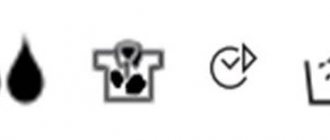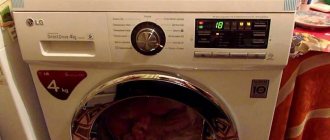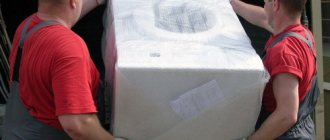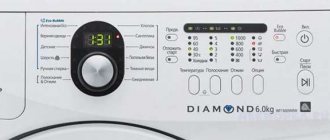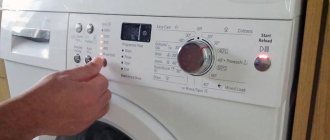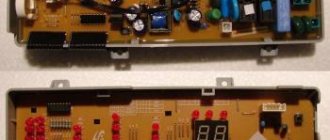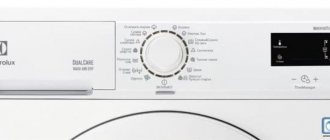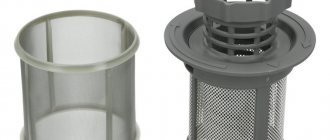Very often, inexperienced young housewives (and sometimes experienced older ones) put things in the washing machine, and at the end of the day they are sincerely perplexed why their favorite T-shirt has faded, the dress has stretched or, on the contrary, decreased in size, and the blouse has not become snow-white again, as at the time of purchase. All these clothing embarrassments have different consequences, but the reason is most often the same: the owner or owner (which is more forgivable) was unable to decipher the incomprehensible icons on clothes, which actually contain the answer to the question about the correct care of the products.
In the article we will tell you what the mysterious symbols mean. Let’s take a closer look at some of the features of washing clothes made from different materials. We’ll also tell you how to remove dirt from outerwear, including sports equipment made from membrane.
There are buyers who strive to quickly get rid of price tags and tags and add removals and labels to this list. Often they are not located in the most convenient places and cause discomfort when worn: for example, those that the manufacturer placed on the collar rub the neck, etc. And although this is a rather unpleasant sensation, getting rid of “annoying pieces of paper” is extremely undesirable. Especially if the item is expensive or the material from which it is made is difficult to handle.
Sometimes buyers face the opposite problem. They look through the item, look for a label to find out how to properly wash it in a machine or by hand, with or without spinning - and they don’t find it. Unfortunately, unscrupulous clothing manufacturers often do not provide information about washing at all or provide erroneous information, following which the item will not be cleaned correctly. When purchasing Stayer products you will not encounter such problems. Detailed information corresponds to the care requirements for models of this brand. Therefore, the clothes will not lose their presentation and will last several seasons longer than their counterparts from other companies.
Basic and additional washing symbols on clothing labels
The images of the signs have been established as an international standard. Therefore, whether on a domestic or a foreign new thing, they will be identical.
You can guess the meaning of some individual icons intuitively. It would seem that everything is logical: the iron shown allows ironing, the crossed out one prohibits it. The drawn square with a circle inside is easy to recognize as a washing machine. But not every housewife will understand that it means not washing, but drying. And you can puzzle over some signs without a hint: letters in circles, sticks in squares and other geometric intricacies. Deciphering the symbols on clothing labels is not a difficult task, but only if you know what they mean.
There are a large number of different signs, from quite primitive to very unusual. It is worth deciding on the main types of such designations. There are only five of them. These are signs of washing, bleaching, drying, ironing and professional cleaning. And each of them has its own subtypes, the nuances in the depiction of which affect the features of caring for the item.
The main additional image can be called a prohibition sign, which consists of two crossed lines. In general, a fairly typical illustrator of the word “impossible.”
Another possible addition is stripes under the designation. This is a direct hint at delicacy in care.
Let's talk about each symbol on the label and its additions in more detail; it's time to fully understand how to wash according to the icons on clothes.
Decoding symbols on item tags
The main way to avoid possible loss of color and change in shape of washed items is to carefully study the washing marks on the clothes. Decoding in everyday life will not be difficult if you remember the basic principles indicating how to wash things:
- Icon of a hand lowered into a basin of water at 30 degrees – manual processing. This symbol on the product tags indicates that the product cannot be washed in a washing machine.
- Image of a pelvis with numbers . The icon allows pre-soaking, manual and machine processing of linen without the risk of damage. The number of the icon indicates the maximum permissible temperature for a given type of fabric.
- The basin icon with the number 95°C allows washing at maximum temperatures and boiling to remove stains, effectively bleach and disinfect bed linen, towels and underwear made of cotton and linen.
- One line under the pelvis. The image indicates the need for a gentle processing mode and the prohibition of spinning at high speeds.
- Two lines under the pelvis. The icon indicates a delicate wash cycle without subsequent spinning. After rinsing, the products are placed horizontally on towels to absorb excess water and left to dry completely.
- An image of a circle with a washing machine inside is an icon that prohibits machine washing. Most often, the delicate wash sign can be found on things with a large number of decorative elements, such as beads, sequins, rhinestones, etc.
- Crossed out wash basin. The image indicates a complete ban on washing. Usually indicated on outerwear, men's and women's suits and other types of materials that require dry cleaning.
Important! Compliance with the procedures recommended by the manufacturers will ensure careful but high-quality removal of contaminants from textiles.
To remove stubborn stains, do not put it off; you must wash the product as soon as possible, not allowing the stain to dry out.
Whitening
If necessary, the procedure should take into account the properties of fabrics and tips for bleaching on clothes for washing:
- the sign of a black crossed out triangle on the label (no bleach) - a ban on all methods of bleaching;
- white triangle - the use of any oxidizing substances is allowed;
- triangle with Cl sign – the use of chlorine-containing products is allowed;
- 2 parallel lines inside - the use of chlorine is prohibited, oxygen-containing bleaches are allowed.
Spin modes
Many products are not able to withstand intense torsion in the drum of a washing machine at high speeds. Excessive physical impact leads to stretching and loss of shape of things. Spin signs:
- a circle inside a square - the icon indicates that a drum spin in a washing machine of any intensity is acceptable;
- crossed out circle - prohibits spinning in a washing machine, the icon allows only manual spinning without excessive twisting;
- 2 lines under the square icon mean that a delicate gentle spin of low intensity is required;
- the image of a crossed out twisted item is a ban on all types of spinning.
Individual countries have their own regulations and methods of applying badges to clothing. The values for washing are deciphered based on the descriptions given. In addition to standard instructions, instructions in English may apply.
Wash
The image in the form of an improvised basin is responsible for this parameter. The number indicated inside the basin is the maximum possible temperature at which washing is allowed. Scale from 30 to 95 degrees. 60 degrees is a figure familiar to many housewives; at a temperature of 95 degrees, boiling usually occurs, and the lowest value of 30 degrees is usually indicated on things that can fade when used at higher temperatures.
Stripes, as we already know, indicate delicate washing:
- One strip means that the machine is allowed to be ⅔ full, and if there are two lines, even ⅓ full.
- Also, in the delicate mode, the number of revolutions per minute should be reduced, the spin time should be reduced, and manually it is advisable not to spin at all (image of two strips) or do it as carefully as possible, without twisting (with one strip).
The sign of a basin with a palm lowered into it indicates a manual washing option at a water temperature of up to 40 degrees. In addition to these recommendations, it implies that the product should be squeezed carefully, without twisting.
With a crossed out basin, everything is clear: the item cannot be washed and most likely should be dry cleaned. We'll look at the professional cleaning icons below.
Spin
Since many materials can be damaged, stretched, or, conversely, shrink significantly when pressed too intensely, you must follow the recommendations indicated on the tag.
| The material from which the item with this sign on the label is made can withstand high spin intensity and machine drying. |
| A gentle spinning and drying regime is required. |
| The product requires gentle spinning at low speeds and machine drying. |
These symbols indicate which mode to select for machine drying this product. The number of dots, like those on the iron, indicate the degree of intensity. One means gentle mode, and three allows strong and fast drying.
| Machine drying can only be done using cold air circulation. |
| Squeezing and machine drying of the product is prohibited. |
Drying and spinning
Various symbols inside the square symbol tell you how to dry things. There are two main types: this is either drying in a washing machine (aka drum drying), or in natural conditions.
One vertical line in the square indicates that the item should be dried in a vertical position; the presence of two lines adds to the vertical position the fact that there is no spin.
The story is similar with horizontal sticks. Clothes marked with this icon should be dried flat. We are talking about products made of wool, knitwear, as well as knitted items.
It is very rare, but you can find these types of designations. These are still the same squares with dashes, but among other things, an oblique stripe appears on them in the upper left corner. Such clothes should be dried in the shade, avoiding direct sunlight. First of all, we are talking about colored products. This type of drying will protect them from quickly fading in the sun.
As for the icons for drum drying, we note that it is prohibited to do it in a machine and the symbols that determine the level of temperature conditions.
Main varieties and stages
The procedure for removing all possible contaminants involves performing standard operations:
- Soak. Provides for manual processing of linen. This step is necessary for the preliminary dissolution of complex contaminants in warm or hot water, depending on the designations on labels for washing clothes. For greater efficiency, mechanical action is recommended.
- Handwash. Necessary for products made from delicate fabrics such as silk, cashmere, wool. The label must contain an icon that indicates that the clothes can be washed by hand, since processing in a washing machine is prohibited. To remove contaminants, specially developed products or shampoos based on soft surfactants are used. Requires some physical effort and time to achieve optimal results.
- Prewash. Recommended for heavy soiling and difficult to remove stains. Provides initial removal of dirt and prepares laundry for subsequent processing. Almost all modern washing machines have a dual mode, which is indicated by a symbol on the body. The result is comparable to pre-soaking, but does not require the use of physical effort.
- Main wash. Standard processing of textiles at various temperatures with acceptable surfactants or bleaches in accordance with the labels on the clothes for washing. Automatic machines, presented in a huge range on the market, contain a variety of programs that allow you to select the optimal mode for any type of fabric.
- Rinsing. The process of removing detergents from fabric fibers. Rinsing can be done either manually or in a washing machine according to the icon on the labels of items.
- Spin. Manually twisting or centrifuging to get rid of excess water at high speeds. Completes the washing and rinsing process. The acceptable spin mode for items must also be set by the user depending on the washing symbols on the label.
For a high-quality result, you should always follow the recommendations of detergent manufacturers for dosing depending on the degree of contamination and the hardness of the local water. When manually soaking, you need to wait until the washing powder is completely dissolved and then dip the laundry in soapy water. For better mixing and distribution of detergents throughout the entire volume of the drum, it is recommended to place the powder directly inside the machine.
Ironing
And although wrinkled clothes were recognized as a trend several years ago, not everyone knows about these fashion trends. As the well-known proverb says: people are greeted by their clothes. And preferably perfectly ironed. Therefore, to prevent a hole in the shape of an iron from appearing on a silk dress, or a huge dark stain on a cotton suit, carefully study and decipher the washing signs on clothes in advance, and not after the unfortunate incident.
The dots on the drawn iron symbol represent the temperature. The more of them, the higher the temperature of the device you can work at.
A crossed iron prohibits ironing. This icon can most often be seen on nylon items (they are straightened and dried on a hanger immediately after cleaning). It is advisable not to iron terry products. It is believed that after this procedure, robes and towels lose their softness and begin to absorb moisture less well.
Ironing icons
- Ironing is permitted.
- Iron the product with a hot iron to a temperature of 200 °C (linen and cotton products). Corresponds to the symbol on the iron’s thermostat in the form of three dots.
- Ironing is allowed at temperatures up to 140°C.
- Ironing is allowed at temperatures up to 150 °C (polyester, wool, viscose, silk, polyester). Corresponds to the symbol on the iron’s thermostat in the form of two dots.
- It is allowed to iron at temperatures up to 110 °C with a slightly heated iron (viscose, nylon, nylon, polyacrylic, acetate, polyamide). Corresponds to the symbol on the iron’s thermostat in the form of a single dot. Steam ironing may cause permanent damage to the product.
- Ironing of the product is prohibited.
- Do not steam the product.
Professional cleaning
Often the stains on clothes cannot be washed off on their own and then the most responsible housewives take them to the dry cleaner. Owners often use special cleaning services for dresses and blouses made of natural silk. Many housewives before and after the autumn-winter season also take outerwear to such companies.
A number of icons on the clothing label will tell you whether dry cleaning is allowed at all:
- The empty round icon allows dry cleaning.
- The "A" inside confirms that any solvent can be used.
- “P” will tell you that things will need to be cleaned with products containing C2H4 (ethylene chloride), CnH2n+2 (hydrocarbon), and monofluorotrichloromethane.
- “F” will indicate cleaning with CnH2n+2 hydrocarbon and trifluorotrichloromethane.
- “W” from the English word wet implies wet cleaning. The dash sign under any of the icons is a hint of gentle/delicate cleaning.
Don't be afraid to take your items to the dry cleaner. The times when strong chemicals were used to clean clothes are long gone. Experts have learned how to clean things with steam, water, and even just air.
Getting around without a shortcut
If it so happens that the label with all the information that we have presented is not on your product, or you cut it off and threw it away/lost it, then pay attention to the composition of the fabric and the following table:
| Cotton | Universal material - can be washed both by hand and in the machine. It easily tolerates many washing powders and shrinks slightly. |
| Wool | It is preferable to wash by hand or using a special “for wool” mode in a washing machine at a temperature of no more than 30 °C. You need to use special detergents for this material. The product cannot be squeezed out; it is permissible to dry it only when laid out on a horizontal surface. |
| Silk | Only delicate hand wash at a temperature not exceeding 30 ° C and using specialized powder. It is unacceptable to soak and wash white, colored and black silk items together. |
| Artificial fabrics ( viscose, modal, rayon, etc. ) | We recommend hand washing at low temperatures using “soft” powders. The product may shrink after washing. |
| Synthetics ( polyester, elastane, lycra, polyamide, etc. ) | Machine washable at a temperature not exceeding 40 °C. Iron the product with extreme caution. The cost of an oversight is too high - the strong heat of the iron can easily melt the item. |
If you know the composition of the item, then you can do without the help of a label.
Otherwise, before refueling the washing machine, check whether it has the same washing modes in a standard graphical representation. If not, we suggest looking at what the signs on the panels of the machines look like, which indicate the same mode under different signs in the article “Icons on clothes for washing.”
Unusual labels on clothes
Take a closer look at the symbols on clothing. Sometimes manufacturers approach their creation very creatively. All this is done to attract the client’s attention to care information. After all, by cutting off “unnecessary” tags, the buyer deprives himself of important and useful data.
Therefore, in addition to the basic conservative designations, jokes, life observations and simply funny pictures appeared on the labels.
Consider the “don’t hit the pandas” badge or the Merry Christmas wish. Manufacturers advise particularly careless males to give things to their mother or girlfriend: “They know exactly what to do with them.” And on some dress models you can find the signature “Don’t forget to wear me on your first date. It's going to be amazing."
What happens if you wash clothes in an automatic washing machine?
If you violate the manufacturer's recommendation that machine washing is not permissible, you need to be prepared for the following:
- your favorite item will lose its shape (products made of polyester and viscose most often stretch);
- the clothes will stretch or, on the contrary, become several sizes smaller (it is especially important to follow the washing regime for woolen items and hand-knitted items).
Compliance with all clothing care recommendations prescribed by the manufacturer on the tag is a guarantee of high-quality care without losing the shape and color of your favorite items.
What happens if you don’t pay attention to the washing instructions on clothing labels?
If not properly cared for, the item will wear out ahead of time. Or maybe even after one “wrong” wash you will go to live in the country or in the trash. And if trouble happens to your favorite but inexpensive blouse, then it is much easier to survive than to lose your favorite down jacket during the season. Or being left without sports equipment before going to a ski resort.
To prevent this from happening, carefully approach not only the study of labels, but also the choice of the product itself. In order for a jacket or down jacket to last a long time, it is advisable to choose models made of membrane material. It is designed to protect the owner from both water and wind.
Most Stayer products are made from membrane material. Thanks to this coating, all moisture (sweat) comes out, and rain, wind and cold do not threaten either the item or its owner with their influence. Therefore, outerwear made from such material is in demand not only among ski athletes, but also among all those who care about their health. Such jackets are a godsend for mothers whose children love to actively run and jump in the yard in any weather. The membrane will help them not get wet and freeze.
For a long time, both ordinary people and athletes believed that membrane jackets could not be washed. Let's debunk this myth. The technologies that Stayer uses allow the seams to hold strong enough and when washed they remain in perfect condition. But if you don’t clean the membrane, dirt will penetrate into its porous structure and the item will lose its presentation.
